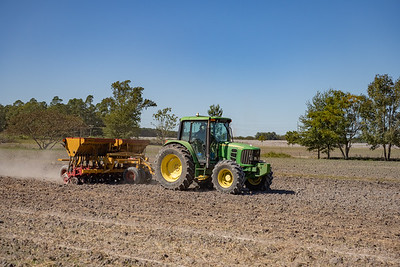Marion Barnes, Senior County Extension Agent

As summer activities pick up on the farm, the likelihood of injuries also increases. Cutting, sprains, insect stings, and other everyday mishaps are standard on the farm. Emergency preparedness and first aid should be part of every farm’s standard operation plan. Due to the wide range of farm sizes and types of operations, a one-size-fits-all first aid kit may not be adequate to deal with the potential for various injuries. Farm-related injuries can vary according to the season, with common causes including machinery, livestock, slips, trips, and falls. An everyday household first aid kit may not be adequate to deal with the more serious injuries we see on farms. How we respond to farm-related injuries is critical when seconds can save lives. A minor injury can often become life-threatening before first responders arrive. Being prepared for medical emergencies and knowing the correct first aid response can help to minimize injuries and save lives.
Ensure the needed first aid materials are on hand where injuries are likely to occur by placing first aid kits in all farm vehicles and major equipment like tractors, combines, ATVs, UTVs, and farm buildings. Store kits in water-resistant and dust-free containers to prevent contamination. Instruct all family members and employees on using the kits properly and how to administer essential first aid treatment. It’s not a bad idea to also include CPR training. One never knows what skills you may need in an emergency.
First Aid Check List
- A farm first aid kit should contain everything needed to treat minor injuries to major trauma events.
- Consider developing several kits specific to hazards and injury potential – contents will depend on the type of operation and kinds of injuries likely to occur.
- Label kits for easy identification and ensure everyone on the farm knows its location.
- Include personal information on individuals with specific medical needs or conditions such as diabetes, insect (bee or fire ant stings) allergies, or taking medications such as blood thinners.
- Check kits often and replace anything that has expired or is missing. If you use an item, replace it immediately.
- Include emergency contact information (family doctor, EMS, Fire Rescue, etc.) and written directions to the farm.
- First aid manual with guidelines or directions for the victim’s care in different scenarios. In an emergency, forgetting what you have learned in first aid classes is expected.
Space is limited, so it’s important to choose items wisely. First aid kits that are smaller will likely be placed on vehicles and equipment, but larger kits should be at the main farm buildings or homes. For more information on farm safety, contact your local Clemson Extension office.
Information for this article was taken in part from First Aid Kits for Production Agriculture, e-Xtension Ag Safety & Health, and Farm Safe- Farm Emergency & First Aid Kits, National Ag Safety Data Base.
Clemson University Cooperative Extension Service offers its programs to people of all ages, regardless of race, color, gender, religion, national origin, disability, political beliefs, sexual orientation, gender identity, marital or family status, and is an equal opportunity employer.
